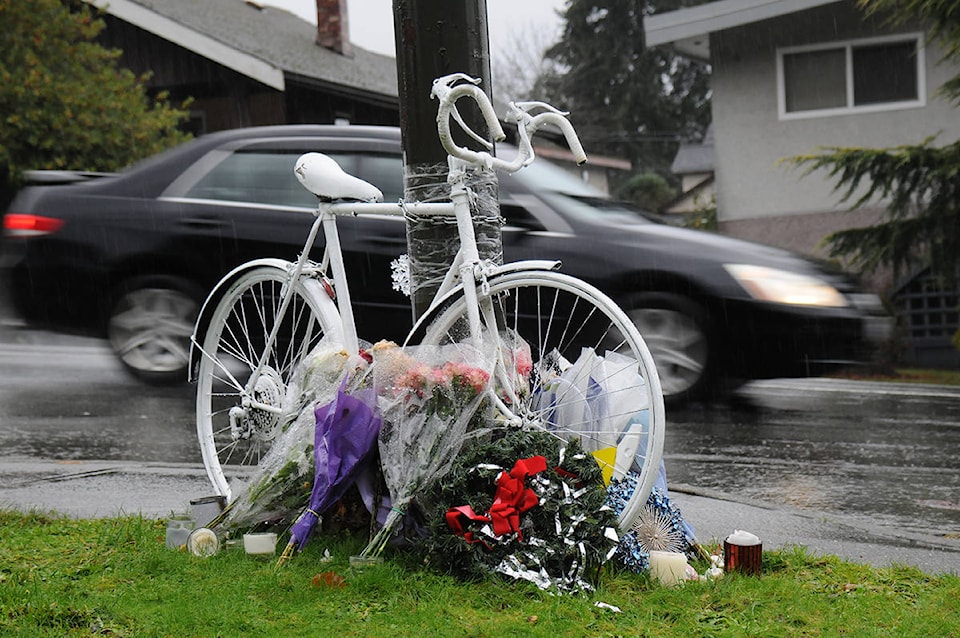Michelle Butt and her family were still in their pyjamas Friday morning when a friend sent them a text to tell them a white bicycle had appeared at her son Daniel’s memorial sometime overnight.
Daniel died while cycling at the corner of 10th Avenue and Dunbar Street in early November, and a makeshift memorial from some of his friends is visible beneath a light pole on the corner. The bicycle has been chained to the pole.
The family shared a private moment as they gazed at the bicycle and read the attached explanation of what it symbolizes.
“It’s beautiful,” Michelle said Friday afternoon.
“For some people it’s a constant reminder about a tragedy that happened. In some sense it’s also a reminder of our precious boy and his passion.”
The bicycle is one of two that were put up on 10th Avenue late Thursday night, Dec. 13. The second one is at the corner of 10th and Redford Street, where Nikita Hedingham died while on her bike a year ago.
The bikes are part of a program called ‘ghost bikes.’ They are painted white and placed at the site where a person riding a bicycle has died. The two in Port Alberni were donated, painted and put up by members of Cycle Alberni.
“The installations are meant as reminders of the tragedy that took place, and as quiet statements in support of the right of all people to safe travel,” said John Mayba of Cycle Alberni. “We felt it was something we needed to do to recognize the tragic situations, and do our part to memorialize them.
“Riderless bikes do not lay blame or place fault,” he emphasized. “For those who create and install the memorials, the death of a fellow cyclist hits home. We all travel the same streets and face the same risks, and realize it could just as easily be any one of us.
“Drivers are affected just as much as everybody else by this.”
The first riderless bikes appeared in St. Louis in 2003, and have spread to 210 locations throughout the world. There are more than 630 white bicycles erected in places where cyclists have died. Cycle Alberni decided to refer to its bicycle memorials as ‘riderless’ instead of ‘ghost.’
“We feel it’s a gentler reference,” Mayba said. “It is a memorial to these kids and something that tries to make people aware of the fact that being on roads, whether day or night is a pretty dangerous thing; and for us to be more cautious.”
Daniel and Nikita, both teenagers, used their bicycles for transportation. Daniel had a passion for cycling and rode his bike for pleasure as well.
“[Daniel] was probably two when he got on his first bike with training wheels,” Michelle Butt said. He did a lot of trail riding as well as using his bicycle to get around. His passion was such that he owned three different bike helmets meant for different purposes, they were fitted to his head and he was diligent about wearing his helmet every time he rode.
“He loved the trails. He used to ride Maquinna Trails. He rode Fir Baby a lot. He would ride the Lookout. He would come home from school and would jump on his bike and ride down to Harbour Quay,” she said.
“That was something he did every day. He just loved to hang out, loved the atmosphere down there. He loved to ride.”
